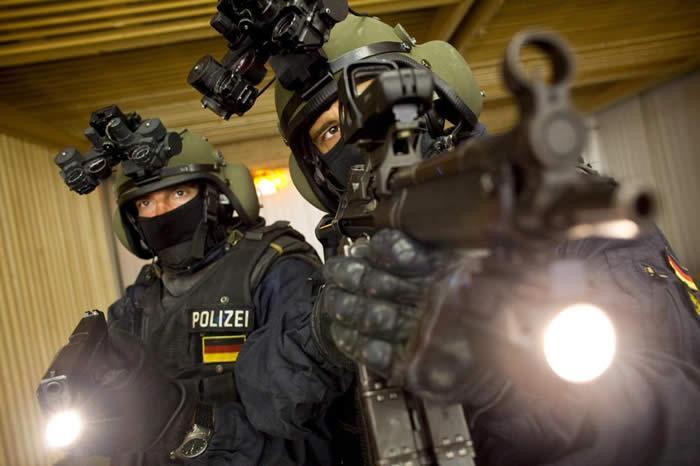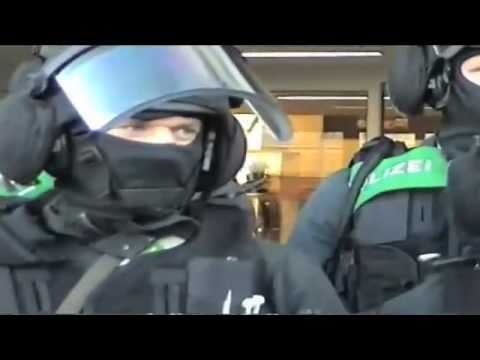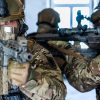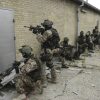GSG 9 der Bundespolizei was formed in the aftermath of the Munich massacre. The tragic moments on September 5, 1972, in Munich, during the Olympic Games, changed the world of law enforcement. Germany suffered the worst terrorist attack in its history.
Introduction
The German police were not prepared for such attacks, so the politicians and security forces decided to form a new unit, especially for counter-terrorism. That was the day when the GSG 9 was born. It officially happened on September 26, 1972. The GSG 9 was an abbreviation for Grenzschutzgruppe 9, which means Border Protection Group 9 of the Federal Police. Their motto has become a phrase: To protect the Fatherland.
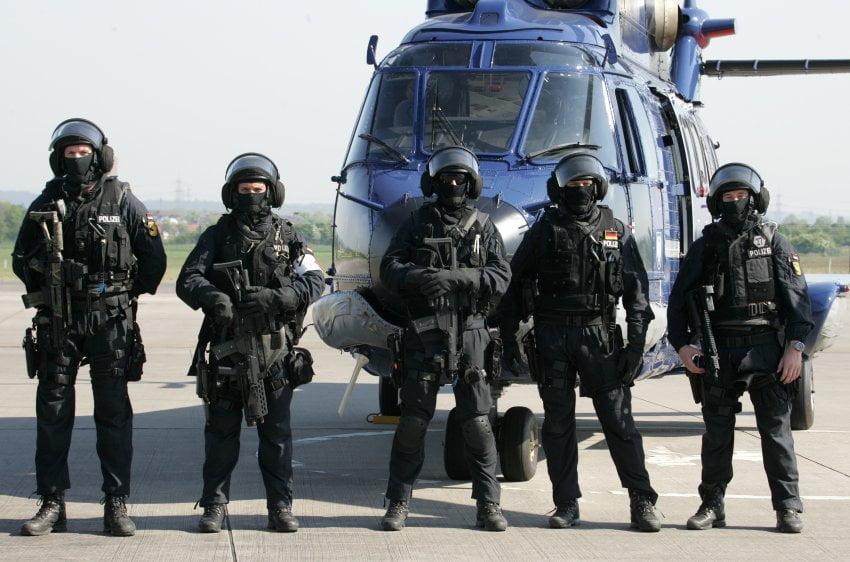
In one of the worst terrorist attacks in history, the Palestinian terrorist movement Black September members infiltrated the Olympic Village during the summer Olympic Games in Munich, West Germany. They stormed the building in the Olympic Village and killed 2 Israelis in the initial assault on the athlete’s rooms, and took 9 Israeli athletes hostage.
The incident culminated when German police, neither trained nor equipped for counter-terrorism operations, and underestimating the number of terrorists involved, attempted to rescue the athletes. They failed, and the operation led to the deaths of one policeman, five of the eight terrorists, and all of the remaining nine hostages. Apart from the human tragedy, Germany’s law enforcement found itself severely compromised, in part due to its historical relationship with Jews and Israel.
History and origins
As a consequence of the mismanagement of the Munich tragedy, the West German government formed the new counter-terrorism unit named GSG 9 under the leadership of then Oberstleutnant Ulrich Wegener. They planned to create countermeasures for similar situations to respond more adequately and professionally. Many German politicians were against such a move, fearing that the making of GSG 9 would rekindle memories of the Nazi Party’s Schutzstaffel (SS). The decision was taken to form the unit from police forces instead of the military as is the model in other countries because German federal law expressly forbids the use of the military forces against the civilian population. Special forces composed of police personnel would reconcile this.
The new counter-terrorism unit was officially established on April 17, 1973, part of Germany’s federal police agency, the Bundesgrenzschutz (Federal Border Guard Service, renamed Bundespolizei or Federal Police in 2005). The name GSG 9 stood for Grenzschutzgruppe 9 (Border Protection Group 9) and was chosen simply because the Border Protection Service had eight regular border guard groups at the time. In 2005, after Federal Border Protection Service was renamed, the abbreviation GSG 9 was kept due to the unit’s fame. Today, GSG 9 is the official way to refer to the unit. The GSG 9 formation was based on the famous counter-terrorism unit Sayeret Matkal from Israel.
Missions
Their primary missions are counter-terrorism-related. GSG 9 is deployed in hostage-taking, kidnapping, terrorism, and extortion. They also are used to secure locations, neutralize various targets, track down violent fugitives and sometimes conduct sniper-involved operations. Furthermore, the GSG 9 is very active in developing and testing methods and tactics for these types of missions. Finally, they may advise the different Länder, ministries, and international allies. The group assists the Bundespolizei and other federal and local agencies on request. At the time of the 1977 Mogadishu mission, the Commander of the Israeli Border Police Tzvi War described GSG 9 as the best counter-terrorist group globally.
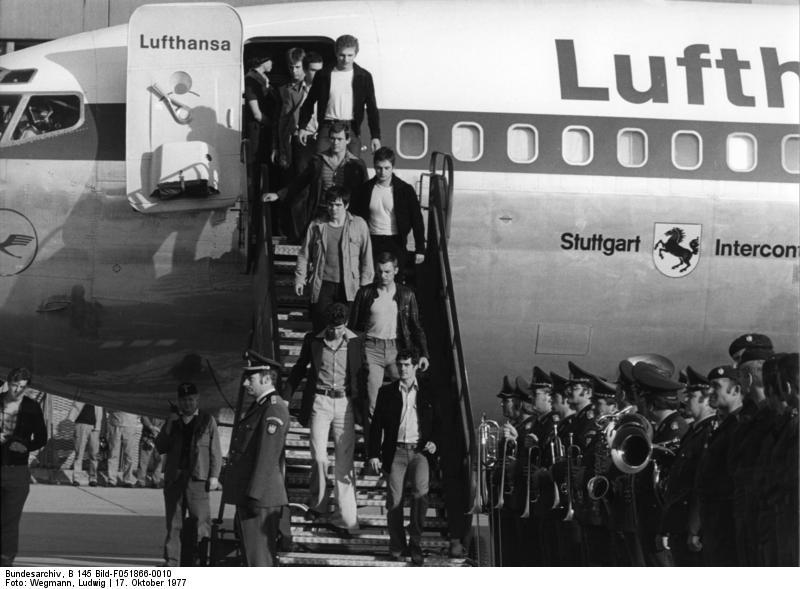
It is estimated that since their inception in 1973, the GSG 9 has completed more than 1,500 missions, only firing their weapons five times – a true reflection of the complete dedication and excellent training of one of the most elite units in the world – GSG 9.
The interesting thing is that they discharged their weapons on only five occasions. At the prestigious SWAT World Challenge in 2005, GSG 9 won an impressive eight out of eight events, beating 17 other teams. GSG 9 defended its championship the following year and placed fifth in 2007.
The GSG 9 also contributed to the other world’s units of the same type. In the wake of the November 2008 Mumbai attacks, German authorities offered to assist India. The GSG 9 helped train and upgrade the National Security Guard, the primary Indian counter-terrorism unit. Germany provided further support to the Mumbai Police to raise a SWAT team on the local level.
Operations
Operation Feuerzauber (Operation Fire Magic)
Its first mission, codenamed Operation Feuerzauber (Operation Fire Magic), immediately established the GSG 9’s reputation as an elite unit. That mission was carried out in 1977 when Palestinian terrorists hijacked the Landshut, a Lufthansa plane from Palma de Mallorca to Frankfurt. Terrorists demanded that imprisoned members of the German Red Army Faction be freed in exchange for the passengers and crew held as hostages. Terrorists then flew the aircraft to several destinations throughout the Middle East. During this time, the Lufthansa captain Jürgen Schumann was murdered by the hijackers’ leader in Aden, Yemen.
Following a four-day odyssey, the terrorist directed the Boeing 737 to Mogadishu, Somalia, where they planned to wait for the arrival of the Red Army Faction members. The German government had falsely signaled they would be released. In the night between October 17 and October 18, GSG 9 and Somalian ranger units prepared operation. While Somalians created a distraction, GSG 9 stormed the plane.
The mission was successful; it lasted seven minutes and resulted in all of the hostages being rescued, while three hijackers died on the scene, leaving the fourth seriously injured. Only one GSG 9 operative and one flight attendant were injured. The international law enforcement and counter-terrorism community applauded the GSG 9 for the excellent and professional handling of the situation, as assaults on planes are considered one of the most challenging and dangerous operations that a hostage rescue force is likely to encounter in their career. The interesting thing was that the British SAS supported GSG 9 action.
The two accompanying British SAS advisers on the scene provided some newly developed flash-bang grenades. Ultimately, GSG 9 operators never used the flash-bang grenades in this mission due to the fire risk inside the aircraft cabin.
Training and Selection
To apply for GSG 9, the candidate needs to meet basic requirements. The candidate needs to have at least two years of service in the Bundespolizei or other German police services. After they fulfill the basic requirements, they go through various tests:
- Final interview
- Marksmanship tests with duty pistol and submachine gun
- Medical examination
- Physical tests include 5000 meters run, 100 meters sprint, jump, chin-ups, bench press, and an obstacle course.
- Psychological examination
After a candidate is accepted, he is sent to the training camp for 22-week training. It includes thirteen weeks of basic training and nine weeks of specialized training. The identity of GSG 9 members is protected by German law, and it is classified as top secret. Further training often involves cooperation with other allied counter-terrorism units, such as Israel’s Yamam, France’s GIGN, FBI HRT. Only one in five candidates passes the training course.
Equipment
The GSG 9 operators are equipped with the most modern personal weapons, mostly from domestic manufacturer Heckler and Koch, but they also have other weapons in their weaponry. Here is the list of the weapons and equipment used by GSG 9:
- AMP Technical Services DSR-1
- FN SCAR assault rifles
- Glock 17
- Glock 19
- Heckler & Koch 416 Commando
- Heckler & Koch 417 Commando
- Heckler & Koch G36 (G36K and G36C)
- G8
- Heckler & Koch MP5, in various versions/configurations
- Heckler & Koch MP7A1
- Heckler & Koch MZP-1
- Heckler & Koch PSG1
- Remington 870
- SIG Sauer SG 550
- Steyr AUG A3
- Heckler & Koch USP Tactical
- Sinn UX GSG 9 diving watch
- Smith & Wesson model 19
GSG 9 or Grenzschutzgruppe 9 is the best Germany may unleash in their security system and one of the best units of this type in the world.
Quick facts
| GSG 9 der Bundespolizei | |
| Country: | Germany |
| Agency: | German Federal Police, Bundespolizeidirektion 11 |
| Active: | September 26, 1972 – present |
| Motto: | To protect Fatherland |
| Type: | Police Tactical Unit |
| Role: | Counter-terrorism, Law enforcement |
| Headquarters: | Sankt Augustin |
| Size: | approx. 400 members |
| Notable operations: | Lufthansa Flight 181; Arrest of Birgit Hogefeld; Arrest of Wolfgang Grams |
| Notable commanders: | Ulrich Wegener |


